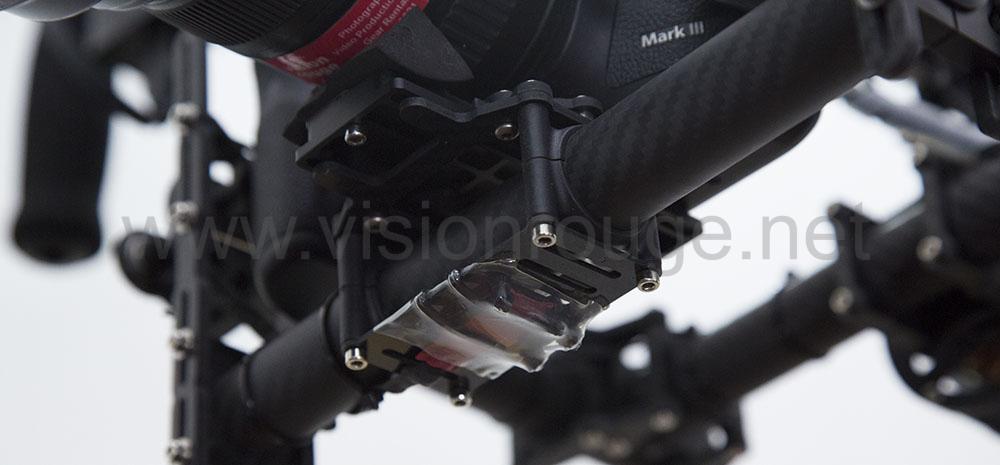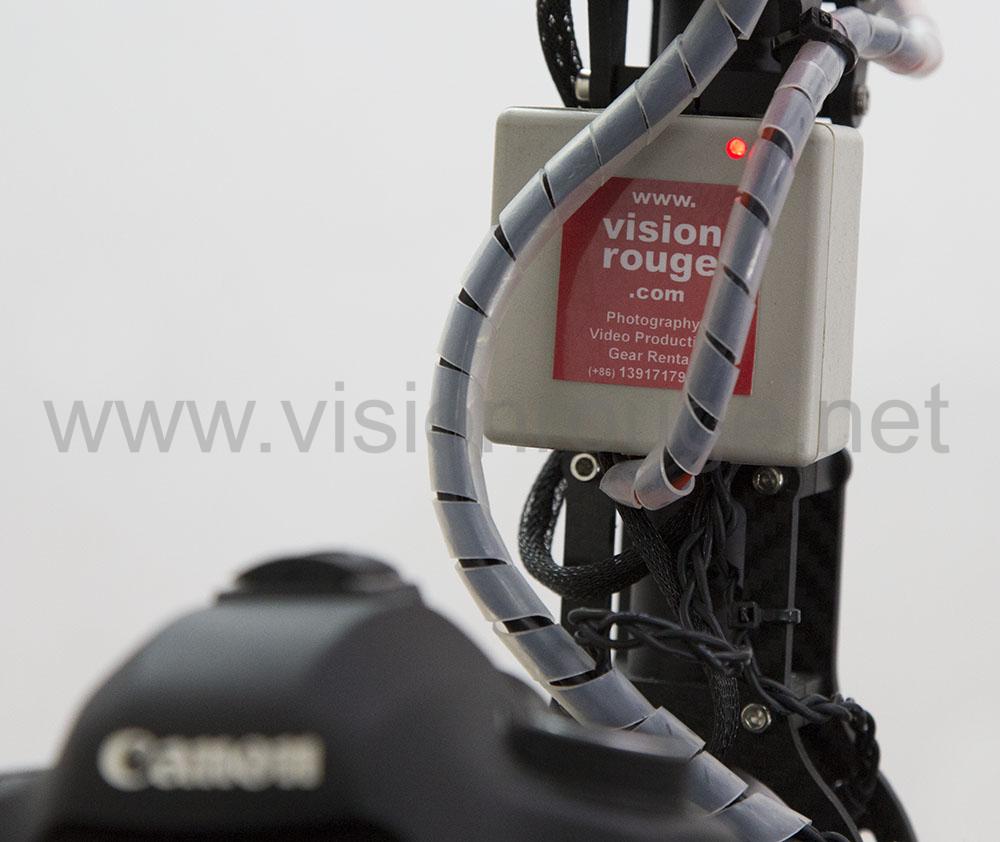DIY Alexmos gimbals VS FreeFly movi
Alexmos gimbal versus FreeFly movi review
First, here are the latest update on my E-Steady system,
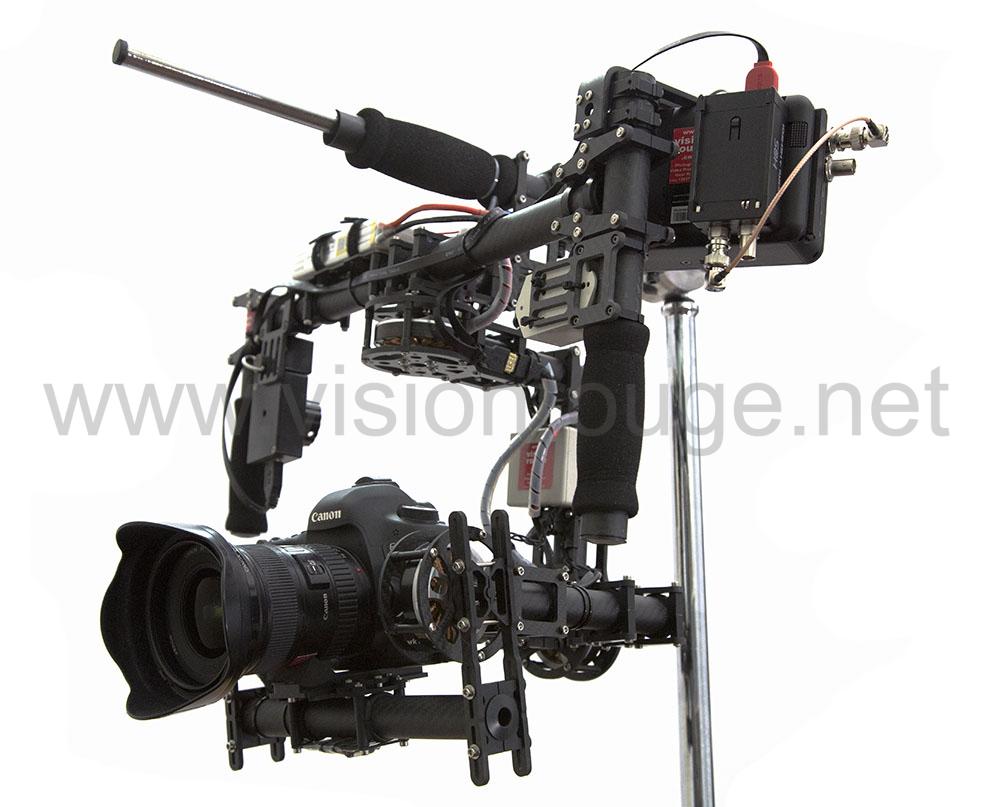
I did few improvement on the last setup, making it completely workable unit and ready to rent it to non experimented shooters. It’s available with different options at the rental section.
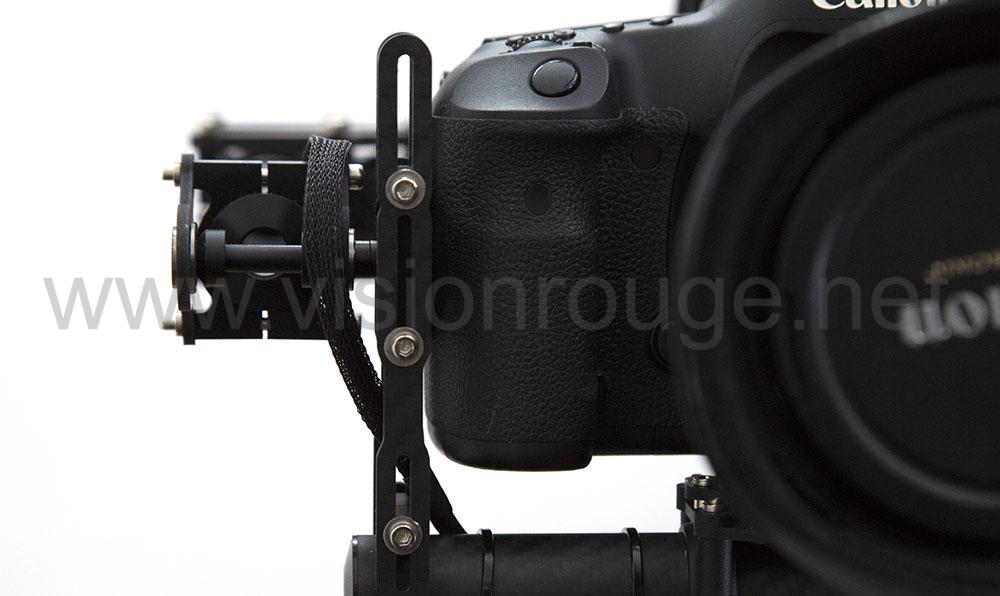
The wiring as been improved,
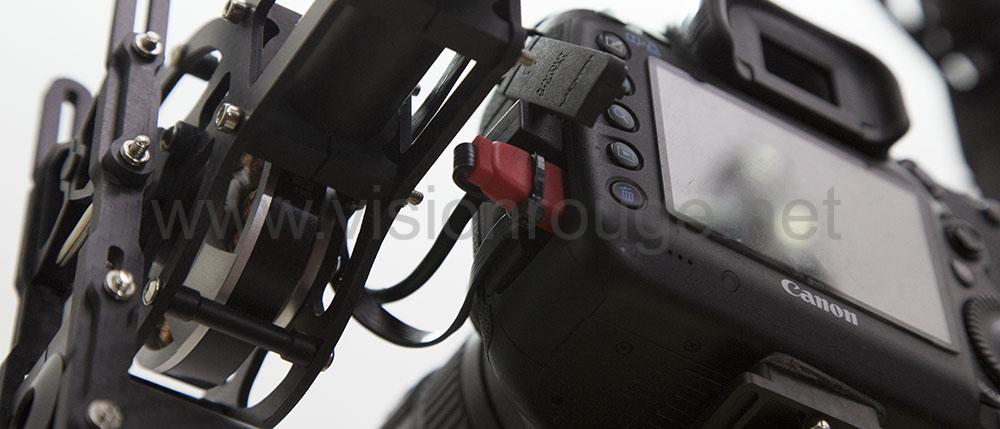
the sensor moved and redesigned and the new Alexmos board include now the 3 axis on the opposite side with voltage control and buzzer system.
I’m using these new alexmos board on the new DJI phantom platform also with quite a success.
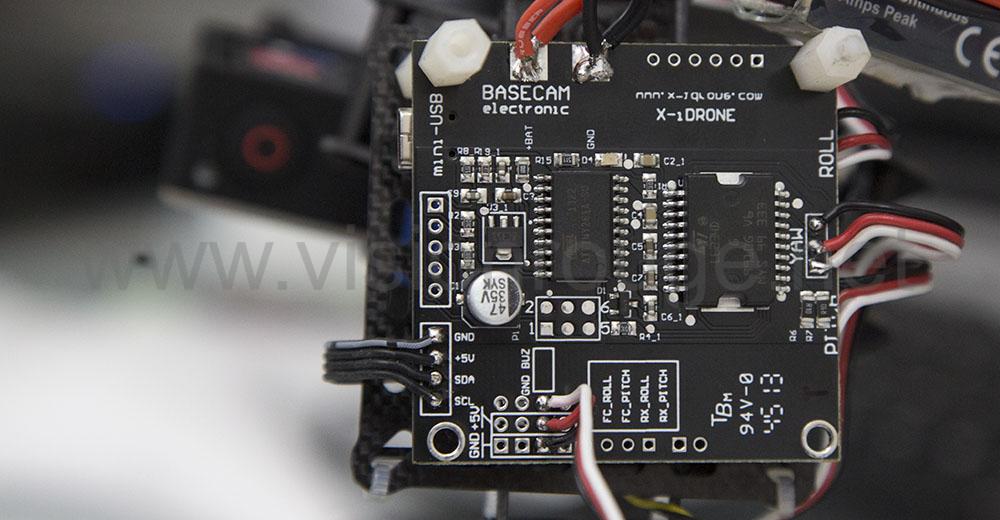
I have extended the handle a bit to avoid to lift up too much my arm during shooting. The screen is now also positioned a bit lower to avoid pain in my neck looking too high when shooting eyes level subject.
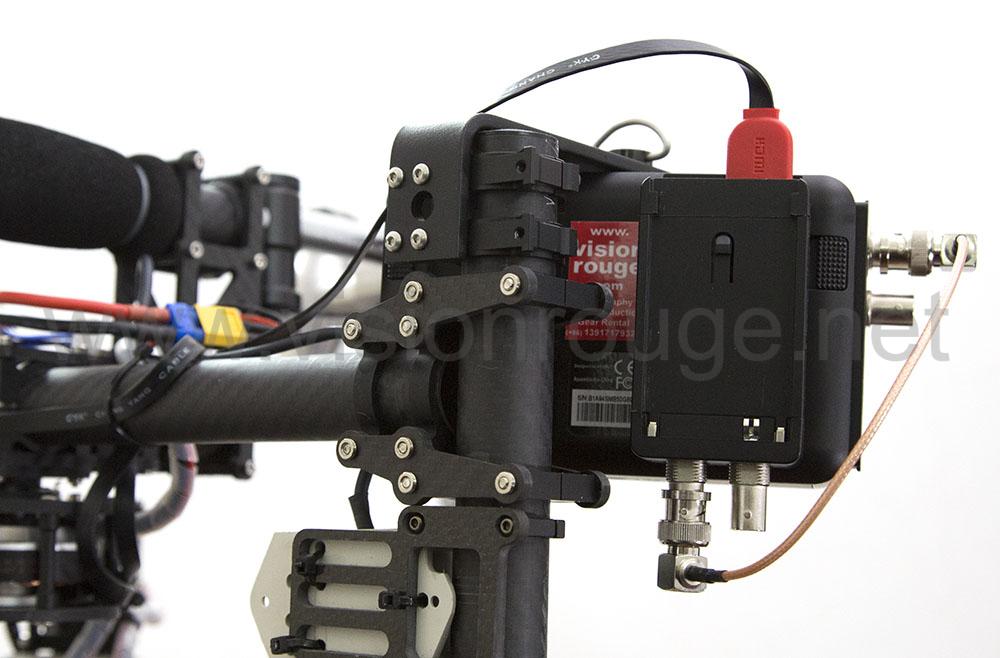
The handle is also shorter to help putting it back to a smaller case for transportation.
I’m sorry to say that I saw a lot of setup on the web, with sample of cats and kids following on the floor level, but holding the rig to an actor face is quite challenging even with only a 6 Kg rig.
Now, the main challenge, Movi against Alexmos setup;
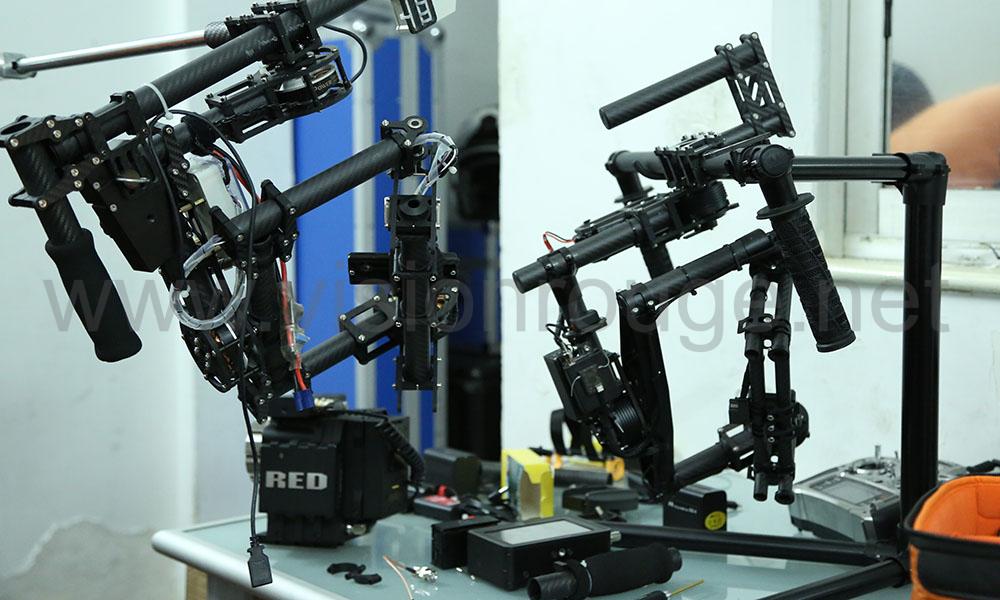
I was lucky enough to get for few hours with the FreeFly system at my office as well as a RED Camera to compare with my Alexmos based gimbals. The internet is full of alternative of the Movi, but what does it mean in the real world? how my system stands in front of the 7 time more expensive one?
First, despite the aesthetic similitude from one meter away, Freefly use a completely different way of controlling the gimbals. There are as much difference as a 4 wheels car compare to a Sedan, they both have 4 wheels and a motor, similitude stops as soon as you go outside for a test drive.
The frame itself is very similar, Freefly did a great design easy to adjust on the height of the camera on the pitch axis, but other axis adjustment need tools and it’s quite long to do it right. It’s clearly the main problem with the Freefly ; the mechanics. The frame can’t hold the camera weight but electric motors can!
The unhappy owner of the Movi system can to me to try to find a way to fix this with part from mine!
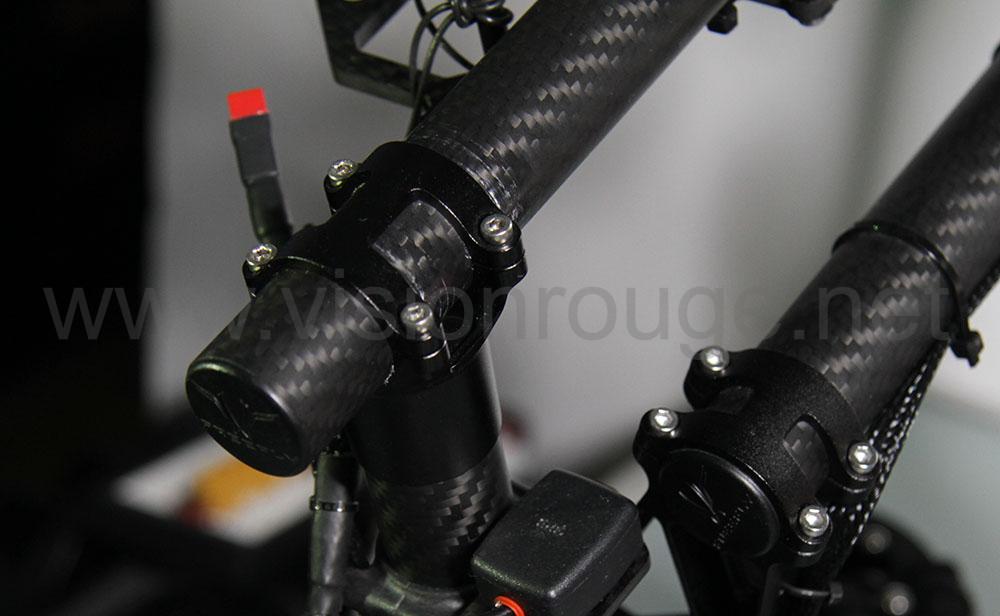
The major problem is the fact that the top tube link can’t be locked enough to hold the full weight of RED + Lens+ follow focus + wireless transmitter and batteries. I fixed it by adding extra locking ring and the funny trick is that it’s pieces from Freefly I have been using!
Top locking system upgrade on the Movi MV10
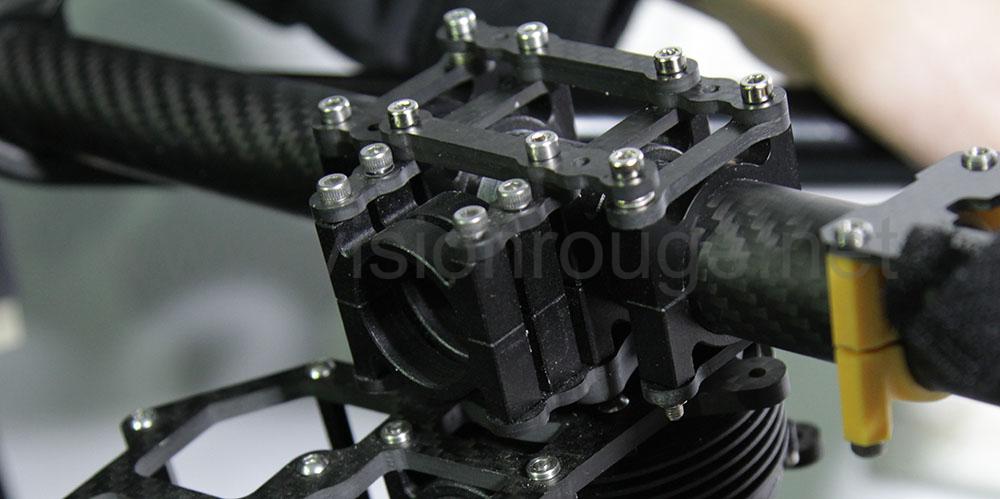
There is still another problem right on the top of the electronic controller, but this time, as they glue the tube to their own metal lock, I need to come with another answer which I’m working on.
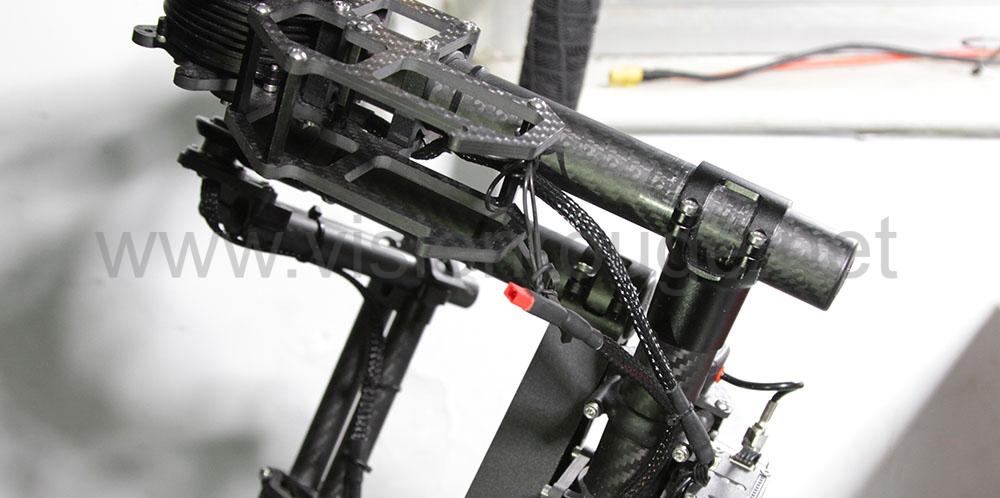
To me, the Movi is not a working product if you load it inside the described limits. There is a real flaw in the design and I would not spend this amount of money on such gimbals.
The second main issue is how fragile all is, the power switch cabling is just a joke and anyone who will be using it with a crew without experimented hobbits will face a bad handling by a crew member and simply destroy one of the very sensitive cable by just putting pressure on it. As it’s the main power, you will just have to stop shooting.
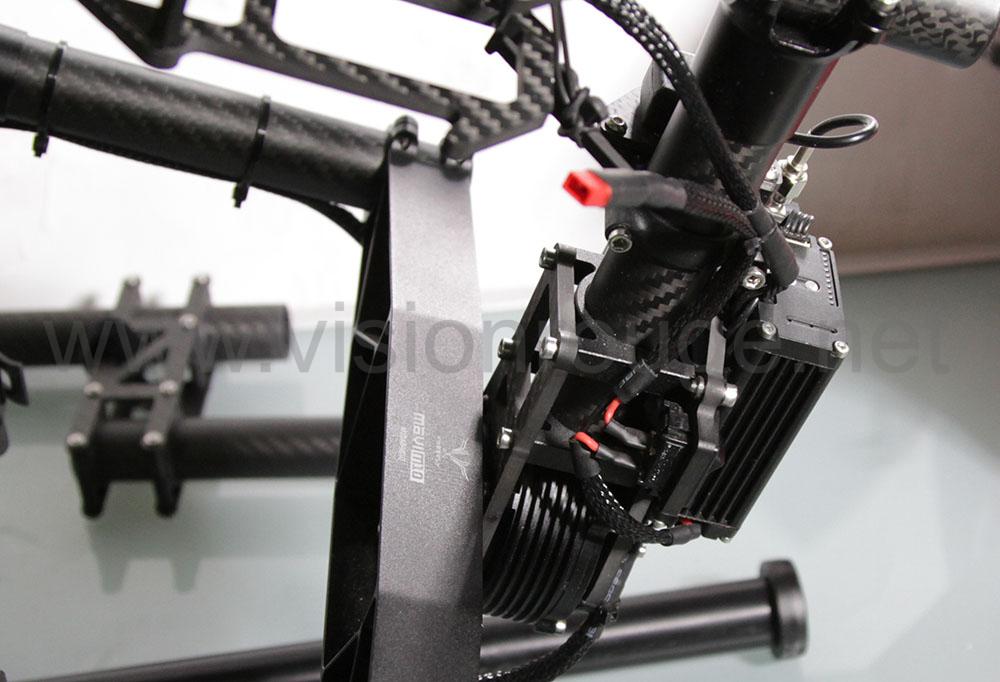
There are also no way to avoid multiple pitch turn, and so the cable can be twisted and cut very easily.
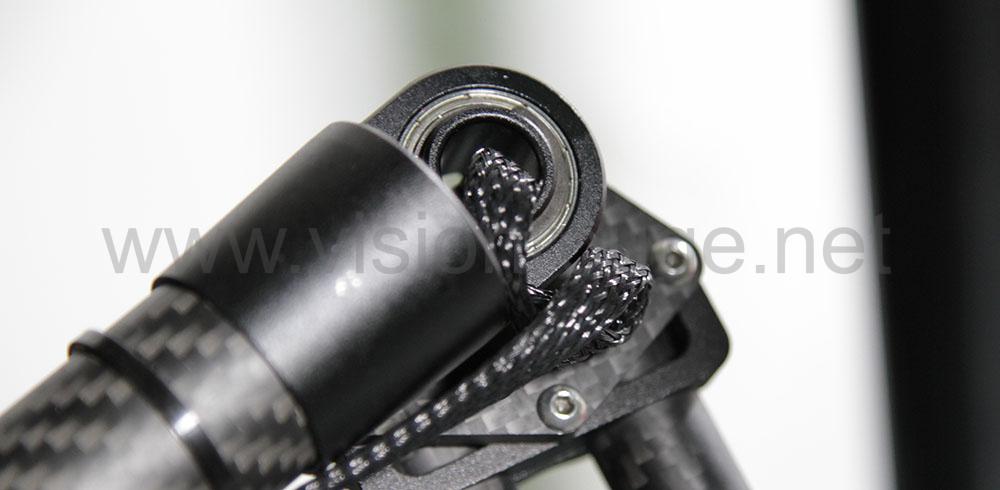
So, if you are a possible buyer, make sure to be the only one to handle it and never give it to some grip with big hands.
I have to say that Freefly history is with passionate hobbits who know how fragile a drone can be, not grip from the cinema business wearing glove most of the day. We have decided to create a large holding cage to avoid such trouble and I will share with you as soon as the prototype will be ready.
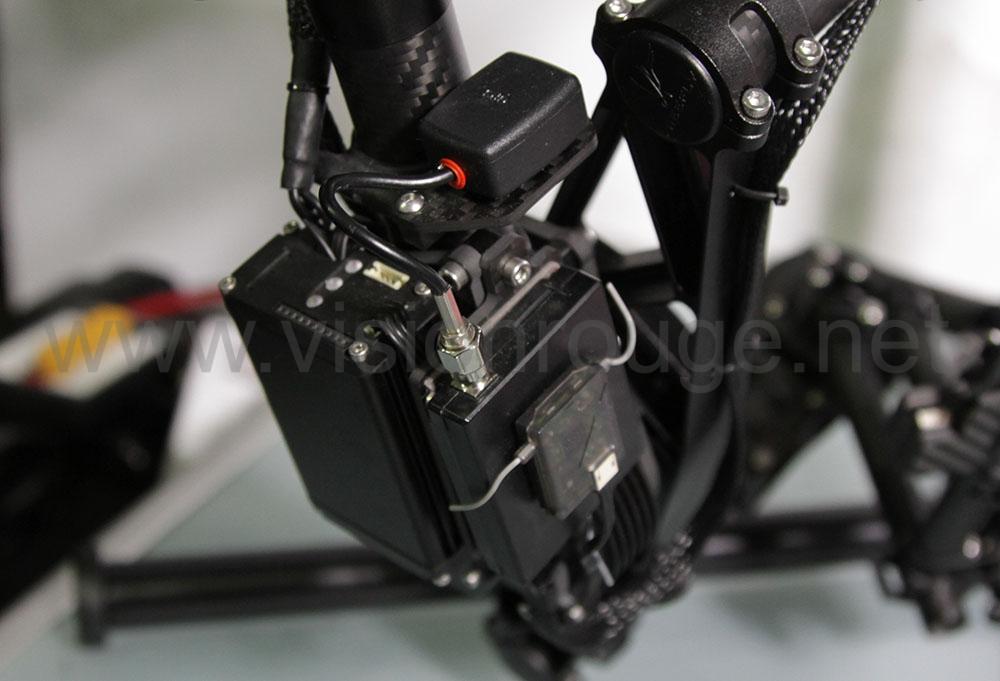
The good now.
Clearly, the motor can lift a huge weight and It’s quite impressive. The system is a bit similar as the Alexmos one, a gyroscope is helping the gimbals to follow the orientation of the camera and order motors to fight back and so stay static. There are a wireless remote system as the Alexmos and parameters can be adjusted with an app making “easy” to adjust depending on camera balance. I think you can also add a Bluetooth module to the Alexmos to do so but I did not test it. The 3 empty memories should be prepare prior to the shooting on mine, and a joystick can help controlling the angle by the operator. Going wireless will forced to send video signal also and the usb follow focus. Clearly, I design it with a different concept in mind.
I suggest the motors are quite different than the brushless one used on the alternative version. You don’t feel the magnet jump if you forced them, also its super smooth and soft if you turn it by hand.
The second main difference is the way the angle feedback from the motor are sent to the controller, there are a sensor dedicated to that as it’s used to be on the old time. This main advantage is the fact that you can lose a step in the motor, the angle will be found anyway, so you can use way different motors also, stronger and smoother. This is the old way of controlling gimbals, the same we can find on the servo system.
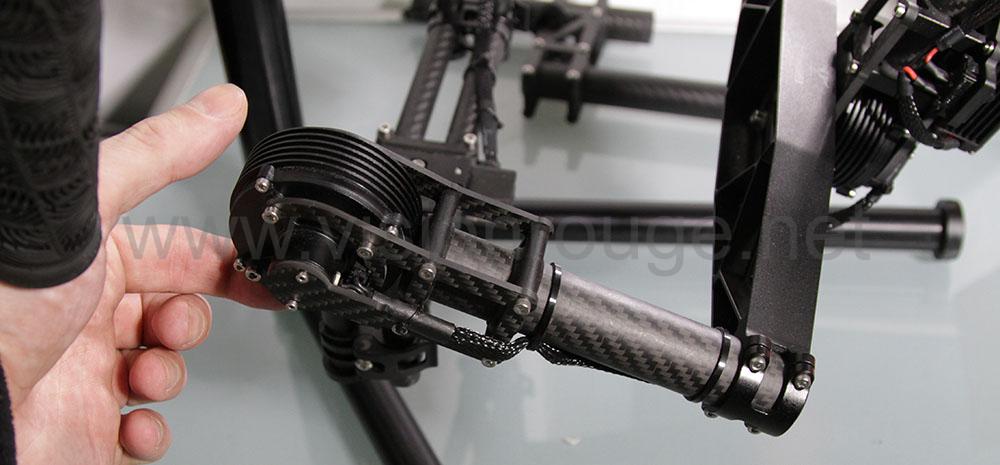
This is where the money is and where none of the brushless copies can fight this. Motors are also enclosed and can received some water drop without any damage. But as a lot of empty connectors can be seen on the controller and sensor, I do not advise such shooting, again, motors are great, but the other part are poorly designed.
Bottom line?
If you need to balance a large camera and have follow focus operator: go for the Freefly, I did not see any copy who can lift about 10Kg (basic setup). 5Kg is just the weight of a RED Epic, anything you will need to add will be a problem. (and you will need the complete setup to make it usable)
I design mine specifically for the 5D as a single operator only.
You can shoot raw if you need perfect picture quality, you can record directly also with the atomos blade via HDMI output to SDI and you can control the focus with the usb remote. So the full package as described here is a perfect working setup. I can have great picture quality, still control aperture and focus. Again, as a single camera operator, it’s quite interesting. The 16/35 do not shift so much weight when you change the zoom ring, so you don’t need to adjust the camera again on the rail.
Building price is about 2,000 usd! you can have 7 of them before reaching the price of the FreeFly Movi 10.
The atomos has peaking, waveform and can be trigger by the 5D time code, it’s very light and sharp screen (maybe hard to read under a strong sun).
On the right hand, you have the camera control (REC start/stop, zoom to help focus, ISO, Aperture, Speed setting, focus adjust) and on the left side, you have the little joystick to follow your subject if you need. A follow yaw angle is also prepared, so you can freely move your body around the subject, the camera will follow you smoothly, perfect also for a pan of a room without any fear of doing it wrong. Speed will be constant all the way.
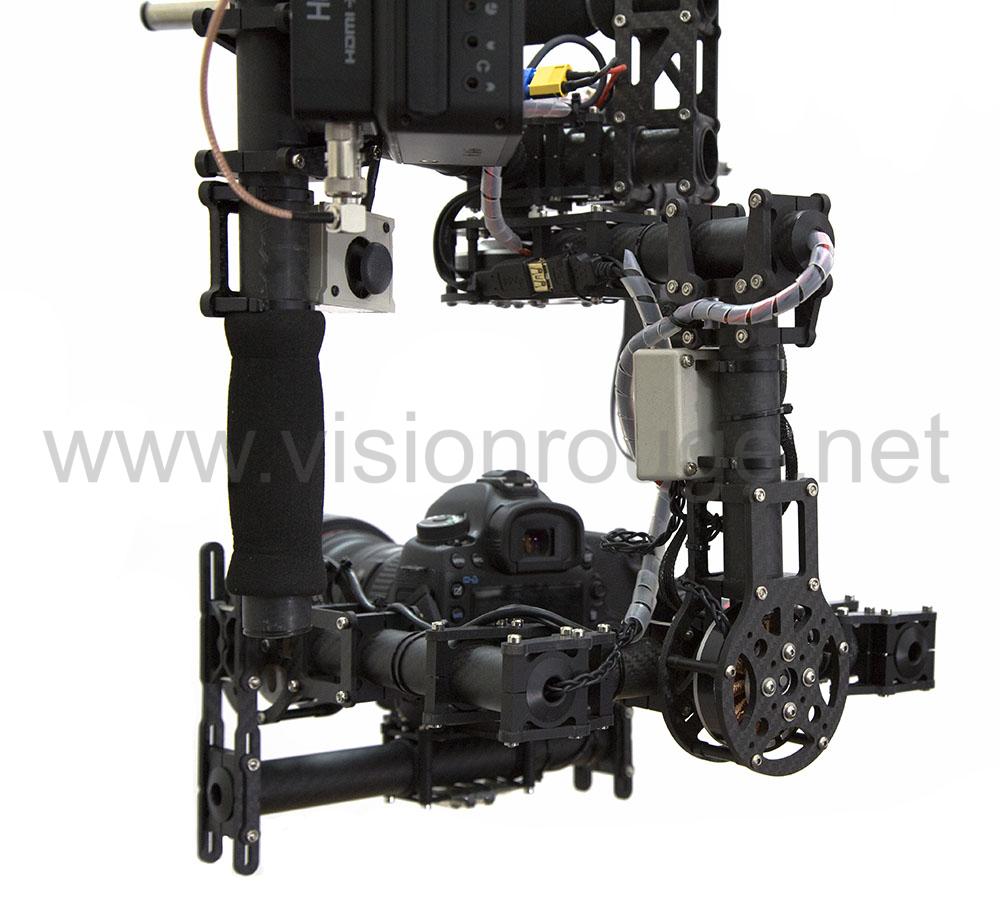
Next step? Polish the wiring for sure.
New controller boards are released everyday’s and a 32bit with more power is on the way. Many new copies are available, please check them before buying it, make sure you have a setup you can use (single operator vs focus puller/wireless control). All rigged, mine is 6Kg only, something you can carry alone, The Freefly with the complete setup is more 12KG! The answer from my colleague was to support it with a cable steady cam system. Again, it’s not the same camera and exact picture quality at the end, but I found that the passionate community ready to build their own copy will use a DSLR more than a wireless follow focus setup with RED epic anyway.

